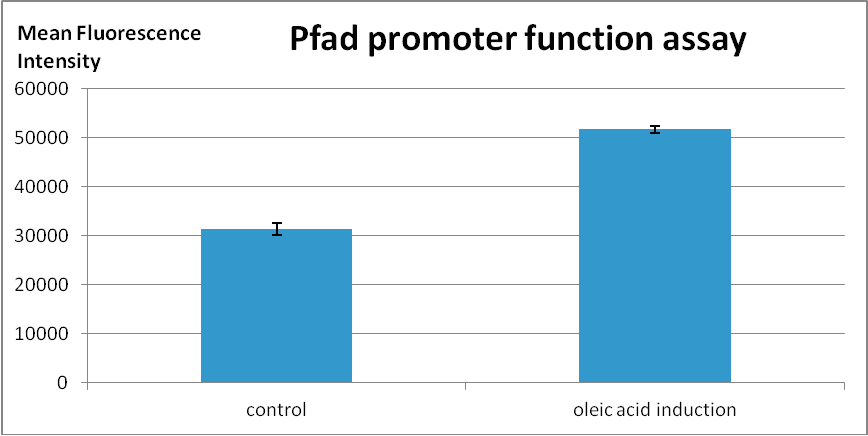Team:NTU-Taida/Result/pFadBA
From 2012.igem.org
(Difference between revisions)
(→Conclusion) |
Darlisereno (Talk | contribs) |
||
| Line 20: | Line 20: | ||
<!-- EOF --> | <!-- EOF --> | ||
| - | {{:Team:NTU-Taida/Templates/ContentEnd}}{{:Team:NTU-Taida/Templates/Footer|ActiveNavbar=Result, #nav-Result- | + | {{:Team:NTU-Taida/Templates/ContentEnd}}{{:Team:NTU-Taida/Templates/Footer|ActiveNavbar=Result, #nav-Result-pFadBA}} |
Latest revision as of 15:05, 26 October 2012
PfadBA Promter Function
Contents |
Method
To evaluate the PfadBA promoter function, we design a PfadBA-mRFP reporter construct. In experimental group we add oleic acid in media and compared to control group, which is the same colony and identical amount of bacteria but without addition of oleic acid. After 5 hr induction we measure the man fluorescence intensity to get the expression level of PfadBA promoter in either group.
Protocol
- 10 μL bacterial culture was cultured in 5 mL LB at 37。C, with suitable concentration of antibiotics shaking for 18 hr.
- For experimental group, 480 μL of bacteria culture was transferred to 1.5 mL eppendorf tube and added with 20 μL of oleic acid and IGEPAL(detergent) in. For control group, 500 μL bacterial culture was added in 1.5 mL eppendorf tube.
- The tubes were incubated at 37℃ 5 hr for induction.
- 100 μL of bacterial culture was transferred tino 96-well plate. The mRFP fluorescence intensity was measured (Excitaion: 580 nm, Emmision: 610 nm).
Data
Oleic acid induction group shows higher expression of mRFP.
Conclusion
Our PfadBA promoter can work in response to environmental fatty acid change, which acts as an important sensor for our bacterial device – secreting GLP-1 when host is fed with fatty diet.
 "
"


